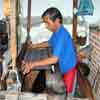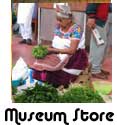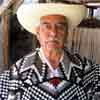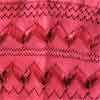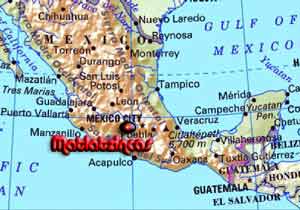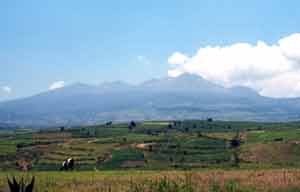 |
 |
 |
 |
Although these towns are not indigenous communities today, many local artisans are proud of the fact that they are the descendants of the Matlatzinca, an important and powerful prehispanic culture. The Matlatzinca speak an Otopamean language that is related to Otomí and Mazahua. Matlatzinca is one of the more endangered indigenous languages of Mexico, spoken today by relatively few individuals in two communities in the State of Mexico. San Francisco Oxtotilpan is located in a valley south of Toluca, and San Juan Atzingo is located near the border with the State of Morelos. The inhabitants of these communities speak different dialects of Matlatzinca, and the people of San Juan Atzingo are sometimes called Ocuiltecos.
No one is certain when the ancestors of the Matlatzincas first moved into the Toluca Valley from the north. One of their ancient villages is Teotenango which was occupied by Matlatzincas from 900 to 1450 AD, when it was conquered by Nahuatl speaking Mexicas/Aztecs. The Matlatzincas once occupied a large territory in western Mexico State, extending from Michoacán to Guerrero. However, the Matlatzincas were marginalized by Otomí and Mazahua peoples expanding into the northern part of the Toluca Valley, and by Aztecs coming from the Valley of Mexico to the east. "Matlat" is a Nahuatl word for net, and the name "Matlatzinca" means "those that make nets." Perhaps this name referred to the Matlatzinca religious practice of sacrificing human victims by crushing them in large nets. After the Spanish conquered Tenochtitlán, they moved into the Toluca Valley and divided up remaining Matlatzinca land for agriculture, forestry, and mining.
Today, the Matlatzinca practice subsistence agriculture and also grow crops like peas, sugar cane, wheat, and barley to sell. They cultivate maguey plants to make pulque and also raise domestic animals and fowl. Many people have left the villages to work in Toluca, Cuernavaca, and Mexico City. Most Matlatzincas are Catholics, but traditional agricultural rituals are still practiced in the communities. Traditional clothing is no longer worn.
Narrative written for Mexican textiles project by Karen Ewell
Thanks Karen
Bob Freund
11/2005
|
Home - The Collection - Indigenous women- Bob's Top 10 - Textile Patterns - Documented Villages - Participate The Store Other traditions Video Page Email me at: mexican@mexicantextiles.com
© 2006 Bob Freund All Rights Reserved |

